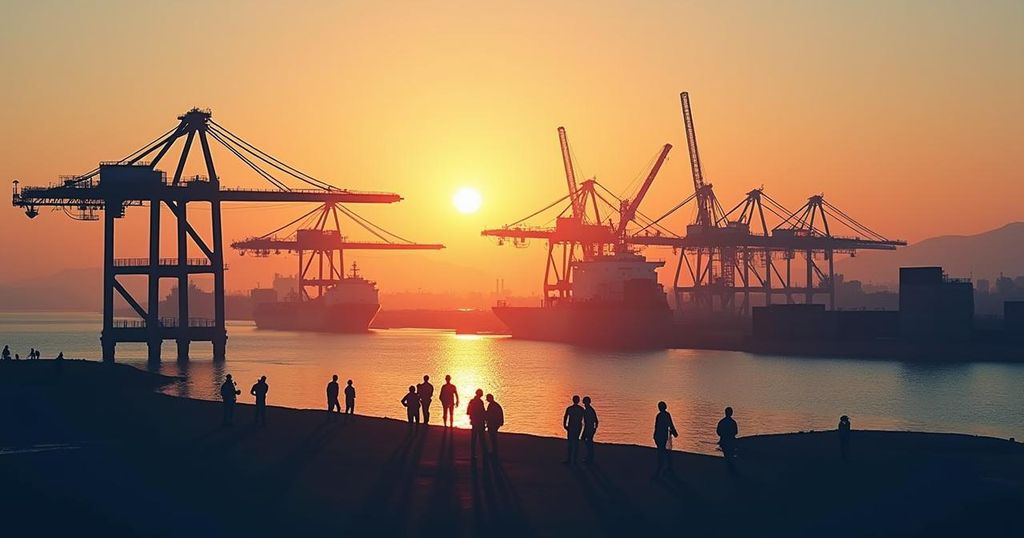The Chancay Megaport in Peru, funded by China, is nearing completion and is expected to revolutionize trade between Asia and South America. Concerns arise that it may divert significant cargo traffic from Chilean ports like San Antonio and Valparaiso, which face expansion limitations due to urban proximity. The port’s modern capabilities may provide a more efficient alternative for shipping companies.
A newly constructed mega-port funded by China, located north of Lima, Peru, is poised to significantly alter trade dynamics between Asia and South America. The Chancay Megaport, which is approximately 93% complete, is slated for completion in November. This strategic port, developed by Cosco Shipping, aims to streamline connections to the Asian market, particularly with China, by enhancing transport efficiency and reducing shipping times and costs. Consequently, there are growing concerns regarding its potential impact on Chilean ports, particularly San Antonio and Valparaiso, as the Chancay Megaport may divert a substantial share of the cargo traffic currently managed by these ports. Chilean shipping professionals have expressed apprehension that the operational commencement of Chancay could undermine the viability of existing port facilities, which face spatial limitations due to their proximity to urban areas. In contrast, Chancay’s modern infrastructure and capabilities to accommodate larger vessels present a more economical solution for shipping firms seeking route optimization. Luis Knaak, General Manager of San Antonio, acknowledged that the Chilean ports’ efficient infrastructure might still suffer adverse effects if cargo traffic shifts to Chancay, thereby impacting the overall logistics network in handling imports and exports. The construction of Chancay, which involves an investment of approximately USD 3.5 billion by Chinese stakeholders, is reported to be on track, with key equipment arriving to facilitate operations and ensure that the construction progresses to completion in the coming weeks. Mariana Coronado, a foreign trade consultant, previously emphasized the strategic expansion of China’s port influence globally, stating, “While the world was in [Covid-19] quarantine, China expanded its control of the transport of goods. Today nearly 100 ports in more than 60 countries are in Chinese hands.” This expansion aligns with China’s broader initiative, the Maritime Silk Road, aimed at securing port operations worldwide and underscores the significance of Chancay in this geopolitical strategy.
The Chancay Megaport, located north of Lima, Peru, represents a strategic investment by China and aims to serve as a pivotal conduit for trade between South America and Asia. Developed by Cosco Shipping, the port is envisaged to enhance shipping efficiency and cost-effectiveness, thereby potentially diverting cargo from established Chilean ports such as San Antonio and Valparaiso. Key concerns arise from the fact that the existing Chilean ports have limited capacity for expansion, primarily due to their urban locations. As the global shipping landscape shifts, this new port is expected to have substantial implications for Chile’s foreign trade operations and logistical frameworks.
The imminent completion of the Chancay Megaport, backed by significant Chinese investment, poses a formidable challenge to Chile’s traditional port operations. With its modern facilities and capacity to accommodate large vessels, Chancay is likely to attract a considerable portion of traffic currently handled by Chilean ports. This shift may necessitate adjustments in the logistics and trade frameworks within Chile to maintain competitiveness amidst evolving global trade patterns driven by strategic infrastructure investments, particularly from China.
Original Source: en.mercopress.com






